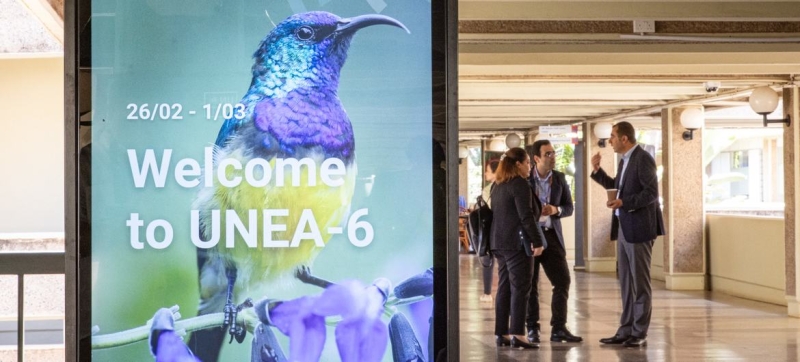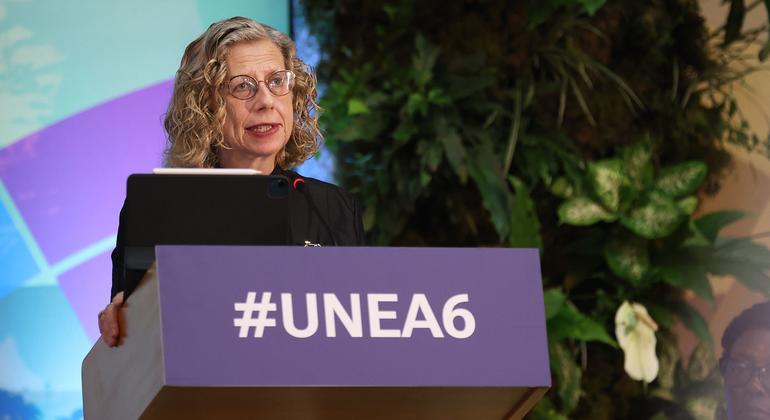
The sixth session of UNEA takes place from 26 February to 1 March in Nairobi, Kenya. WE EXPLAIN | UN Environment Assembly: what is it and why is it needed? Climate and Environment
Every two years, all 193 UN member states meet at the United Nations Environment Assembly (UNEA) to collectively address critical environmental issues. The sixth session of the Assembly runs from 26 February to 1 March in Nairobi, Kenya.
Within the framework of UNEA, which is called the “world parliament for the environment,” environmental policy priorities are determined and international legislation on this issue is developed.
Why UNEA is important?
A record 6,000 delegates are expected to attend the 2024 Environment Assembly (UNEA-6), including seven heads of state and 139 ministers and deputy ministers , as well as experts, activists and representatives of the private sector.
UNEA was created in 2012 as a result of the UN Conference on Sustainable Development (Rio+20), held in Brazil. This marked the beginning of a new era of multilateral cooperation in which environmental issues are given the same importance as global peace and security or health issues.
Over the years, UNEA has adopted key resolutions on topics such as combating illegal wildlife trade, environmental protection in armed conflict zones, transport planning and others.
Negotiations at the 2022 Environment Assembly have begun work on the first legally binding international instrument to end plastic pollution, expected to be completed by the end of 2024
What’s at stake this year?
Multilateral agreements will be the central theme of UNEA-6 on the environment and how they can help address the “triple crisis” of climate change, biodiversity loss and pollution.
Read also:
Five facts about clean energy minerals and the dirty process of extracting them
Despite uncertainty due to rising geopolitical tensions and the impact of the COVID-19 pandemic, important progress in environmental cooperation has been achieved in the past two years.
For example, in 2022, the General The UN Assembly recognized the universal human right to a clean, healthy and sustainable environment, which paved the way for constitutional and legislative changes at the country level.
The same year, historic Kunming was established -Montreal Global Biodiversity Framework, which provides action to protect 1 million critically endangered animal and plant species.
In June 2023, 193 UN member countries signed the so-called High Seas Treaty, aimed at preserving marine biodiversity in areas beyond national jurisdictions.
Last November at the UN climate conference COP28, the launch of a Loss and Damage Fund to help vulnerable countries affected by climate change was announced.
UNEA-6 will set aside a day to discuss these and other achievements, as well as to review the measures planned by governments, in particular to ensure adequate funding for the implementation of the multilateral agreements they have signed.
Which topics are in priority?
United Nations Environment Program (UNEP) Executive Director Inger Andersen has identified six priority areas for UNEA 6: water scarcity; responsible mining; rational use of mineral resources, especially phosphorus; climate change technologies; financing conservation efforts; and implementation of the Kunming-Montreal Framework Program.

In Andersen’s words, “We need to come together and implement the global actions we have promised each other to ensure a future for all humanity on a healthy and prosperous planet.”
Negotiations before and during the event focus on resolutions proposed by member states and the ministerial declaration that will be adopted at the conclusion of the Assembly. Resolutions aim to identify and prioritize problems and their possible solutions. They also define the main directions of UNEP’s work.
UNEA-6 will discuss 20 resolutions and two decisions on topics such as modification of solar radiation, mining, desertification, sugarcane production cycle, highly hazardous pesticides, increasing drought resilience, regional cooperation on air quality.
How negotiations are progressing?
Expected that UNEA resolutions will be adopted by consensus. In practice, this means that every member of the Assembly present has the right to veto a decision. Therefore, the week leading up to the conference is important for delegates to review draft documents and overcome possible conflicts. Negotiations often last throughout the week, and closed-door meetings can last late into the night.
As the highest global decision-making body on environmental issues, UNEA strives to restore harmony among humanity and nature and improve the lives of the world’s most vulnerable.
UNEP will take a number of measures to reduce the environmental impact of the conference itself.
